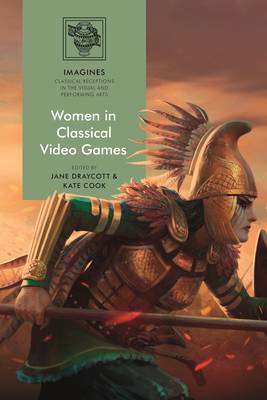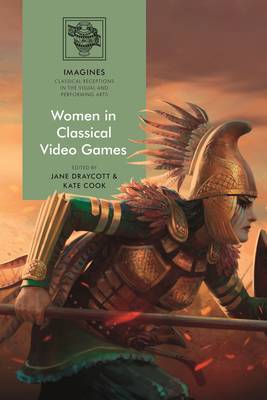
Je cadeautjes zeker op tijd in huis hebben voor de feestdagen? Kom langs in onze winkels en vind het perfecte geschenk!
- Afhalen na 1 uur in een winkel met voorraad
- Gratis thuislevering in België vanaf € 30
- Ruim aanbod met 7 miljoen producten
Je cadeautjes zeker op tijd in huis hebben voor de feestdagen? Kom langs in onze winkels en vind het perfecte geschenk!
- Afhalen na 1 uur in een winkel met voorraad
- Gratis thuislevering in België vanaf € 30
- Ruim aanbod met 7 miljoen producten
Zoeken
Women in Classical Video Games
€ 228,95
+ 457 punten
Omschrijving
Despite the prevalence of video games set in or inspired by classical antiquity, the medium has to date remained markedly understudied in the disciplines of classics and ancient history, with the role of women in these video games especially neglected. Women in Classical Video Games seeks to address this imbalance as the first book-length work of scholarship to examine the depiction of women in video games set in classical antiquity.
The volume surveys the history of women in these games and the range of figures presented from the 1980s to the modern day, alongside discussion of issues such as historical accuracy, authenticity, gender, sexuality, monstrosity, hegemony, race and ethnicity, and the use of tropes. A wide range of games of different types and modes are discussed, with particular attention paid to the Assassin's Creed franchise's 21st-century ventures into classical antiquity (first in Origins (2017), set in Hellenistic Egypt, and then in Odyssey (2018), set in classical Greece), which have caught the imagination not only of gamers, but also of academics, especially in relation to their accompanying educational Discovery Modes. The detailed case studies presented here form a compelling case for the indispensability of the medium to both reception studies and gender studies, and offer nuanced answers to such questions as how and why women are portrayed in the ways that they are.
The volume surveys the history of women in these games and the range of figures presented from the 1980s to the modern day, alongside discussion of issues such as historical accuracy, authenticity, gender, sexuality, monstrosity, hegemony, race and ethnicity, and the use of tropes. A wide range of games of different types and modes are discussed, with particular attention paid to the Assassin's Creed franchise's 21st-century ventures into classical antiquity (first in Origins (2017), set in Hellenistic Egypt, and then in Odyssey (2018), set in classical Greece), which have caught the imagination not only of gamers, but also of academics, especially in relation to their accompanying educational Discovery Modes. The detailed case studies presented here form a compelling case for the indispensability of the medium to both reception studies and gender studies, and offer nuanced answers to such questions as how and why women are portrayed in the ways that they are.
Specificaties
Betrokkenen
- Uitgeverij:
Inhoud
- Aantal bladzijden:
- 288
- Taal:
- Engels
- Reeks:
Eigenschappen
- Productcode (EAN):
- 9781350241916
- Verschijningsdatum:
- 8/09/2022
- Uitvoering:
- Hardcover
- Formaat:
- Genaaid
- Afmetingen:
- 156 mm x 234 mm
- Gewicht:
- 576 g

Alleen bij Standaard Boekhandel
+ 457 punten op je klantenkaart van Standaard Boekhandel
Beoordelingen
We publiceren alleen reviews die voldoen aan de voorwaarden voor reviews. Bekijk onze voorwaarden voor reviews.








